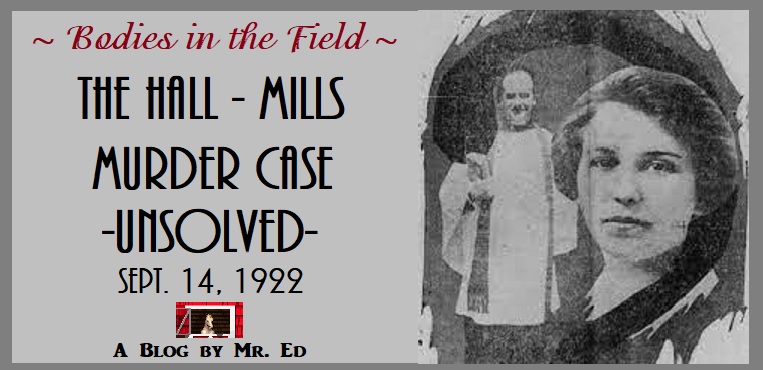
The victims, Edward Wheeler Hall and Eleanor Mills.
The Hall–Mills murder case involved Edward Wheeler Hall, an Episcopal priest, and Eleanor Mills, a member of his choir with whom he was having an affair, both of whom were murdered on September 14, 1922, in Somerset, New Jersey, United States. Hall's wife and her brothers were accused of committing the murders, but were acquitted in a 1926 trial. In the history of journalism, the case is largely remembered for the vast extent of newspaper coverage it received nationwide; it has been regarded as an example of a media circus. It would take the Lindbergh kidnapping trial in the 1930s to eclipse the high profile of the Hall-Mills case.
Discovery of the bodies ~
On September 16, 1922, the bodies of Eleanor Mills and Edward Hall were discovered in a field near a farm in Somerset County, New Jersey. Both bodies were on their backs, both shot in the head with a .32-caliber pistol, the man once and the woman three times. The bullet entered the man's head over his right ear and exited through the back of his neck. The woman was shot under the right eye, over the right temple and over the right ear. A police officer at the scene noticed that the woman's throat had been severed, and maggots were already in the wound, indicating the death occurred at least 24 hours earlier.
The bodies appeared to have been positioned side by side after death. Both had their feet pointing toward a crab apple tree. The man had a hat covering his face, and his calling card was placed at his feet. Torn-up love letters were placed between the bodies.
A jurisdictional issue complicated the initial investigation, as the crime scene was near the border between Somerset County and Middlesex County. New Brunswick (Middlesex County) police arrived first, but the crime scene was actually in Franklin Township (Somerset County). While the authorities addressed the confusion, curiosity-seekers trampled the scene, took souvenirs, and passed Hall's calling card among the crowd. The physical evidence was thus severely compromised.
